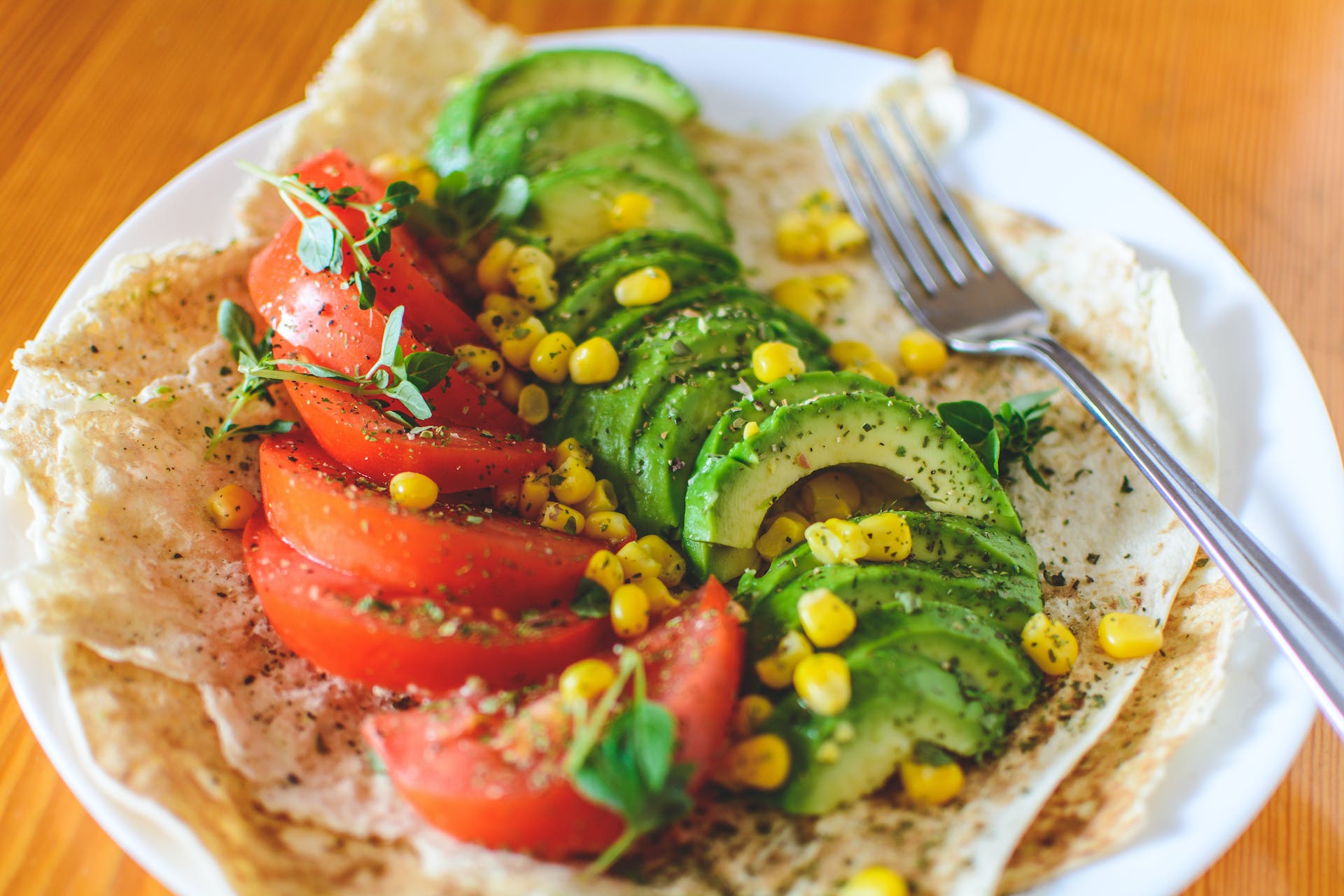Imagine you’re a master sculptor, but instead of clay or marble, your medium is fresh, vibrant vegetables. With the right tools and techniques, you can transform a humble carrot, a bunch of kale, or a head of cauliflower into a culinary masterpiece. Just like a sculptor needs to know their materials and tools, you need to understand the basics of selecting, preparing, and cooking vegetables to get the most flavor and nutrition from them. In this guide, we’ll walk you through 11 simple steps to elevate your veggie cuisine, making it not just an accompaniment, but the star of your meal. Ready to discover the potential hidden in your crisper drawer?
Key Takeaways
- Master different cooking methods such as roasting, grilling, stir-frying, and sautéing to bring out the best flavors and textures in vegetables.
- Choose the appropriate cooking method for each type of vegetable to optimize flavor and texture.
- Use stovetop steaming to cook vegetables evenly and retain nutrients.
- Sautéing vegetables quickly over high heat with a small amount of oil can create delicious and nutritious dishes.
Understanding Vegan Cooking Basics
Let’s dive into the basics of vegan cooking, where you’ll learn about various cooking methods for vegetables, experiment with diverse seasonings, understand the nuances of storage and reheating, draw inspiration from seasonal recipes, and discover tips to increase your veggie intake in fun and tasty ways.
First, mastering cooking methods is key. Roasting brings out the natural sweetness of root vegetables, while grilling adds a smoky flavor. You can also stir-fry or sauté your veggies for a quick, nutrient-rich meal.
Next, spice up your dishes with fresh herbs, exotic spices, and condiments. They’re simple ingredients that can transform the taste of your main ingredients such as leafy greens like spinach.
Storage and reheating can be tricky. Always store your veggie leftovers in the refrigerator to maintain freshness. When reheating, choose the method that best preserves the texture and flavor.
Looking for inspiration? Explore a variety of vegetable recipes perfect for every season. From hearty winter stews to refreshing summer salads, there’s always something new to try.
Lastly, don’t shy away from experimenting. Grate veggies into your pasta sauce, blend them into smoothies, or sneak them into breakfast dishes. Healthy cooking is all about creativity!
Mastering Vegetable Selection
Having sharpened your skills on vegan cooking basics, you’re now ready to master the art of vegetable selection, understanding which cooking method best suits each vegetable type for optimal flavor and texture. This expertise will not only enhance your recipes but also boost your Vegetable Intake, ensuring a healthier veggie cuisine.
For sautéing fresh veggies, remember to cook them quickly over high heat. This retains their nutrients and intensifies their flavors. Similarly, when stir-frying, prep all ingredients beforehand. Cook them in the right order to guarantee even cooking and a harmonious blend of flavors.
If you’re boiling veggies, methods like blanching and simmering can preserve their nutrients and vibrant colors. This way, every portion of vegetables served is not only delicious but also nutritionally rich.
Lastly, don’t underestimate the power of roasting and baking. High temperatures can bring out the natural sweetness and savoriness of vegetables, adding a new dimension to your dishes. By mastering vegetable selection and understanding their best cooking methods, you’ll be well on your way to creating effortless, healthy, and flavorful veggie cuisine.
Perfecting Stovetop Steaming
Steaming vegetables on the stovetop is an art you can perfect with the right techniques and vegetable choices such as broccoli, carrots, spinach, and baby bok choy. For successful stovetop steaming, you’ll need a metal or bamboo steaming basket. This hovers over the boiling water, keeping your veggies from getting soggy while they cook.
Ensure even cooking by cutting vegetables into uniform sizes before steaming. This simple step is crucial for meal prep as it guarantees evenly cooked vegetables, a vital component of any healthy meal. It’s easy to overcook when you’re steaming, but you can prevent this. Regularly check your veggies with a fork or knife. When they’re just soft enough to pierce, they’re done.
Don’t be afraid to get creative for your guests. Enhance the flavor of your veggies by adding herbs, spices, or even a splash of lemon juice to the boiling water. The steam will carry these flavors into your veggies, making them more enticing. With these simple tips, you’re on your way to perfecting stovetop steaming and helping your loved ones eat more veggies.
Sautéing Vegetables the Right Way
Diving into the art of sautéing vegetables, you’ll find that high heat and a dash of oil can quickly turn any selection of veggies, from asparagus to onions and peppers, into a flavorful masterpiece. It truly is an easy to make method, and with the right ingredients, your favorite foods can be transformed in minutes.
- Sautéing vegetables is a skill that:
- Adds a new dimension to your cooking. Imagine the aroma of onion, garlic, or ginger simmering in olive oil in a pan, creating a tantalizing base for your veggie delights.
- Allows you to explore new recipes, opening up a world of culinary possibilities. Each vegetable brings its unique flavor, texture, and color to the table, allowing you to craft dishes that are as pleasing to the eye as they are to the palate.
- Lets you serve others with dishes that retain more nutrients than other cooking methods, offering meals that are not just delicious, but also healthful.
Stir-frying Techniques for Flavorful Dishes
While sautéing can add a delightful twist to your veggies, mastering stir-frying techniques can elevate your dishes to a whole new level of flavor and texture. Stir-frying is all about high heat, constant movement, and quick cooking. It’s a technique that locks in the nutrients and enhances the natural flavors of your vegetables, making your meals vibrant and satisfying.
Start by prepping all your ingredients. Try a colorful medley of bell peppers, sweet potatoes, and roasted Brussels sprouts. Once everything’s ready, heat up your wok or large sauté pan until it’s smoking hot. Add a drizzle of oil, then begin cooking your veggies, starting with those that take the longest.
Sweet potatoes, for example, need more time than bell peppers. Add your ingredients in stages, making sure each is almost fully cooked before introducing the next. Constant stirring is vital to prevent burning and ensure even cooking.
Don’t be afraid to experiment with different seasonings and sauces to create diverse and delectable dishes. The beauty of stir-frying techniques for flavorful dishes lies in their versatility and the endless possibilities they present. Enjoy your culinary journey!
Benefits of Boiling: Blanching or Simmering
Let’s explore the benefits of boiling techniques such as blanching and simmering, which can help you unlock the full potential of your vegetables. These methods are simple yet effective, ensuring your meal is bursting with flavor and nutrients.
- Boiling: This is your go-to for crisp, vibrant Green Beans or Root vegetables. The secret key? Don’t overcook! Over-boiling can rob your veggies of their nutrients. With a good vegetable peeler and a keen eye on your cooking times, you’ll have perfectly cooked, nutrient-packed vegetables in no time.
- Retains nutrients: Boiling helps vegetables keep their essential vitamins and minerals. Your recipe makes the most of these valuable goodies when you boil correctly.
- Quick and colorful: Fast boiling results in crispy, colorful, and nutritious veggies. A feast for the senses!
- Blanching: Ideal for achieving that tender-crisp texture we all love. Blanch in salted water before giving your veggies a quick cool-down in an ice bath.
- Simmering: Perfect for vegetables that need a bit more time. Root vegetables love a good simmer. Remember, it’s not just about softening the veggies, it’s about unlocking their flavors too.
Master these techniques with your food processor and you’ll be serving up delicious, nutritious veggie dishes with ease.
Roasting & Baking: A Comprehensive Guide
Now that you’ve mastered the art of boiling and simmering, it’s time to turn up the heat with roasting and baking, two cooking methods that’ll transform your veggies into caramelized, flavorful delights. In our ‘Roasting & Baking: A Comprehensive Guide’, we’ll walk you through how to achieve perfectly cooked veggies that are tender on the inside and crisp on the outside.
Preheat your oven to 400 degrees. Chop your chosen veggies – perhaps a sweet potato or a butternut squash – and toss them in olive oil and seasonings. The high heat caramelizes the vegetables, creating a balanced sweet and savory flavor. Baking, akin to roasting, is perfect for dishes like baked sweet potatoes or roasted crispy potatoes.
Roasted butternut squash, for instance, is a warming, flavorful dish that’s ideal for a cozy dinner. The key is to experiment. Try varied seasonings and herbs to enhance the flavors of your roasted and baked vegetables. From root veggies like carrots to seasonal options like Brussels sprouts, roasting and baking will open up a new world of effortless veggie cuisine.
Frying Veggies for Crispiness
Diving into the world of frying can unlock a realm of crispy, golden veggie delights that are incredibly easy to prepare. Frying your favorite recipes, such as the classic Green Bean, in hot oil until they’re golden and crispy can transform them into irresistible dishes. It’s super easy and you’ll love the results!
Make sure you’re doing it right by following these simple steps:
- Heat your oil in a pan.
- Toss in your veggies. Don’t be afraid to experiment with different varieties.
- Fry until golden and crispy.
To add more texture and flavor, consider these tips:
- Coat your veggies in a batter or breading before frying.
- Ensure the oil is hot enough before introducing the veggies. This ensures a crispy outcome.
Finally, here’s how to achieve perfection:
- Drain your fried veggies on paper towels to remove excess oil.
- Serve immediately to enjoy the crispiness at its best.
Don’t forget, you can also achieve a similar roasted effect using an air fryer. It’s another fantastic way to serve up crispy, golden veggies. Enjoy the ride and happy frying!
Grilling Techniques for Veggie Lovers
From the crunch of fried delights, we move onto the smoky allure of the grill, where a whole new world of flavors awaits your favorite veggies. Grilling techniques for veggie lovers are simple and rewarding, transforming humble vegetables into the perfect side dish or even a main course for your Easy Meatless meals.
Preheat your grill, and brush your veggies with olive oil to prevent sticking. Smaller veggies can fall through the grates, so use a grill basket or skewers to keep them secure. Grill over medium heat to develop a beautiful caramelization and that irresistible smoky flavor. Don’t forget to rotate and flip your veggies for even cooking and those eye-catching grill marks.
Seasonings and marinades are your friends here. They can enhance the grilled veggie flavors, making every bite an explosion of taste. Experimenting is the key to finding what works best for you and those you serve.
Grilling not only elevates the taste but also helps people get their daily dose of essential vitamins like Vitamin C and Vitamin K, found abundantly in veggies. So, fire up your grill and start exploring the exciting world of veggie grilling.
Braising & Stewing: A Deep Dive
If you’re looking for a way to imbue your veggies with deep, rich flavors, turning to braising and stewing methods might just be your culinary game-changer. Imagine serving a dish that not only looks enticing but also smells heavenly, tastes delectable, and melts in the mouth. That’s the magic of braising and stewing.
To start, add a bit of oil and aromatics to a pot, then sauté your chosen veggies. Next, pour in a flavorful liquid, set the timer for roughly 75 minutes, and let the heat do its work. This slow, patient cooking method breaks down the veggies, releasing their natural sugars and amplifying their flavors.
- The result? A meal that’s:
- Savory and hearty: Perfect for warming up on chilly evenings.
- Loved by all: Even picky eaters can’t resist these tender, flavorful veggies.
- Great for serving: Braising and stewing make it easier to serve satisfying, restaurant-quality meals right at home.
This method is one of the best for hearty veggies like root vegetables, beans, and squash. With a bit of practice, you’ll soon master this technique, elevating your veggie cuisine to the next level.
Quick Pickling, Canning & Freezing: Preservation Techniques
Moving on to the topic of preservation, let’s delve into the techniques of quick pickling, canning, and freezing, which can help you keep your vegetables fresh and flavorful for longer periods. Quick pickling is a simple process: just immerse your veggies in a brine, let them sit for at least 30 minutes, and voila! They’re ready to enhance your favorite meals.
| Technique | Process | Tips |
|---|---|---|
| Quick Pickling | Immerse in brine, sit for at least 30 minutes | Keep at room temperature |
| Canning | Cook, seal in an air-tight container, process in water bath | Cool at room temperature before storing |
| Freezing | Blanch, cool, pack in air-tight container, freeze | Prevent freezer burn with a good seal |
Canning requires a bit more effort, but the results are worth it. Cook your veggies, seal them in an air-tight container, then process in a water bath. Let them cool at room temperature before storing.
Freezing is another option, especially for veggies like zucchini. Blanch, cool, pack in an air-tight container, and freeze. You’ll be able to make zucchini bread even in the dead of winter by just thawing and draining your frozen zucchini.
Remember to store your regular rice separately to prevent it from absorbing the flavors of the preserved veggies.
Frequently Asked Questions
What Do You Think Is the Effortless Way of Cooking Vegetable Dishes?
You might think it’s difficult, but it’s not. Stir frying veggies, using an Instant pot, crafting raw salads, baking roots, grilling skewers, or making cold soups offer effortless ways to create delightful veggie dishes.
What Are the 6 Basic Methods of Cooking Vegetables?
You’ve got vegetable grilling techniques, steaming methods explained, sautéing veggies basics, benefits of roasting, stir frying secrets, and a blanching vegetables guide. They’re all basic methods for cooking veggies, each with their unique benefits.
What Is a Simple Healthy Way to Make a Vegetable Dish More Flavorful?
You’ll transform your veggies into culinary masterpieces with spice infusion and herb choices. Roasting techniques, flavorful dressings, marination methods, and veggie grilling will skyrocket your dish’s taste to unimaginable heights. Cooking has never been so flavorful and healthy!
How Do You Cook Vegetables Quickly and Easy?
You can cook veggies quickly and easily by mastering steaming essentials, quick sautéing, microwave cooking, blanching basics, stir fry techniques, and pressure cooking. These methods ensure you’ll serve delicious, nutrient-rich dishes in no time.







